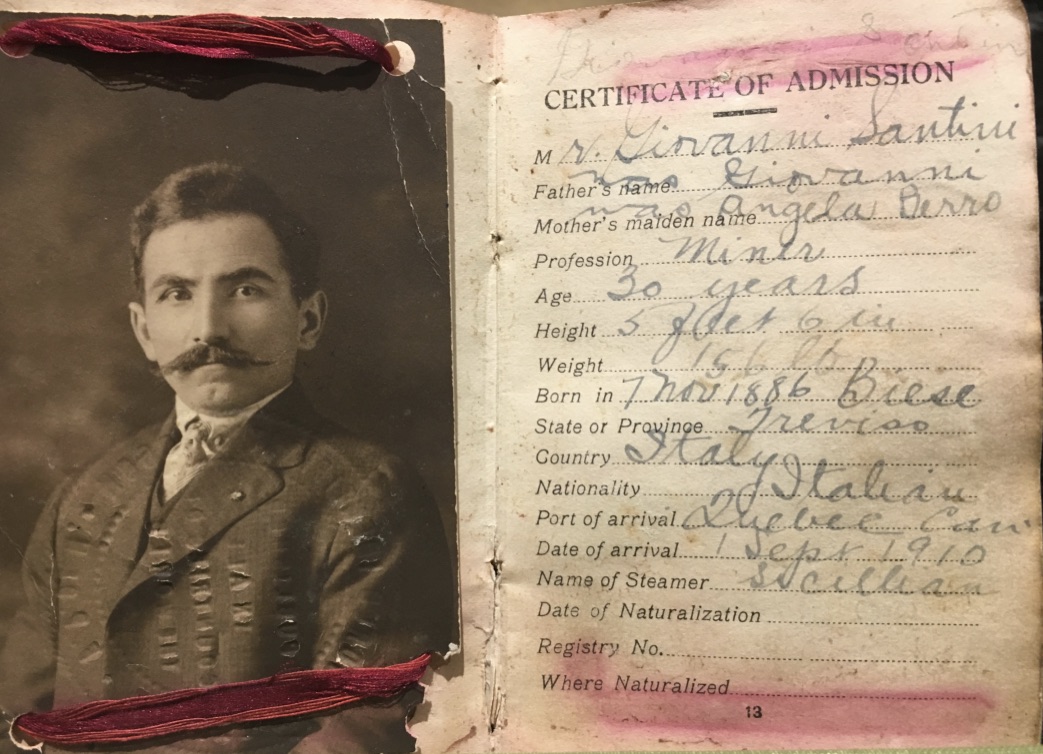The image above shows Giovanni Santin’s Canadian entry document issued in 1910.
When you look at old family photos or documents that belonged to your parents or grandparents, they tell a story about their history and experiences. Old photos take us to different times and prompt questions about when they were taken, who are the people and where are they – and even who took the images. Migration can make those photos and documents even more important because they reflect the two worlds – the country of birth and the new nation and life. Photos of relatives in Italy become a way to keep precious memories of family members who are separated by distance. Migrants often sent back photos to their families to show details of their life in Australia and significant events – birth of children, first holy communions or weddings. As the generations age, and with separation from family in
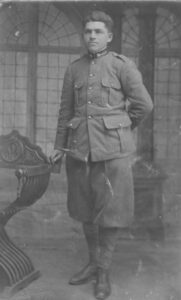
Italy, people may not know the relatives in old photos taken in Italy unless they have been identified with names on the back or written into photograph albums.
If family members brought documents to Australia, it is more straightforward to understand their context because they will include details such as names and dates and you understand the purpose of them. Not all people keep old papers and official records but there is one Veneto family that had a treasure trove of documents – and photos – that date back to the first decade of the 20th century.
Santin family records
In the Santin family, stories are contained in photos taken both before Giovanni Santin departed Caselle di Altivole in the Veneto region and after his arrival in Adelaide in 1927. Giovanni had married Maria Tessari in 1907 and their daughter, Angelina, was born in 1908. In 1910, Giovanni went to work as a miner in Canada and he returned to Caselle di Altivole in 1917. His wife Maria died in 2018 and in 1919, Giovanni married Costantina Visentin. Eight years after Giovanni arrived in Adelaide, Costantina and their four children joined him in 1935. The children were: Lui, 14 years, Vito, 12 years, Romildo, 11 years and Virginia, 8 years.
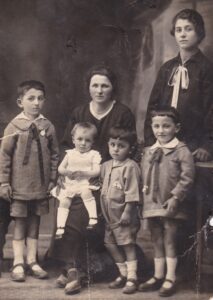
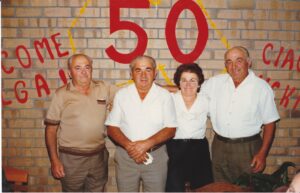
In 1985, the four Santin siblings celebrated the anniversary of their arrival in Adelaide and the photo is a record of the event, reflecting the significance of a new life that unfolded eventually on Frogmore Road where the family bought a market garden. Giovanni’s first daughter, Angelina, had married Pietro Compostella who migrated in 1938 and Angelina and with their three children in 1947 in Adelaide.
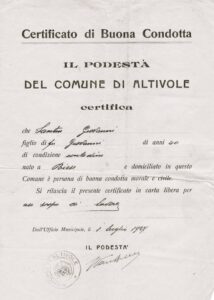
The value of family records
Diana Panazzolo nee Santin has held a large collection of family documents since her parents died. The documents provide an insight into the history of the family and include Royal Italian Army documents that give Giovanni’s date of enlistment in 1908 and his discharge certificate, 1909. Giovanni’s entry document for Canada shows that he arrived in 1909 and departed in 1917. During that time, he worked as a miner. Giovanni also kept his record of ‘Good Conduct’ which was issue by the local municipality at Altivole before he emigrated in 1927.
Other documents tell a story about Costantina and the four children in 1935 – through a number of legal documents that were required for emigration. These included: an official document that approved the emigration, medical certificates and vaccination records and an identity card for Costantina.
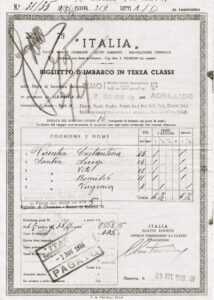
One of the most interesting papers in the collection of family documents is the embarkation ticket for Costantina and children, Lui, Vito, Romildo and Virginia on the ship, Remo, that left Genova 8th November 1935. The ticket was purchased on 29 October 193, just ten days before the ship left the port. They travelled in 3rd class in Cabin 219 and the ticket included “rations.” The journey took 36 days. The family group arrived at Port Adelaide on 31 December 1935. It is interesting to consider the various steps that the family had to take in their local council area in to fulfil requirements and it is rare to have so many records that tell the story of the emigration of a family from Italy to Australia during the years between the wars.
Other documents include Santin family papers such as an Australian identity certificate for Giovanni Santin required during the Second World War, naturalisation certificate, licence to purchase fuel in partnership with Alberto Berno as primary producers in 1946 and receipt of the purchase of a GMH vehicle in 1949.
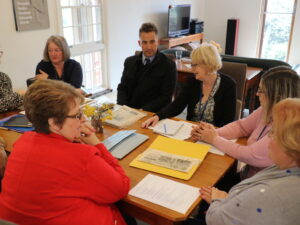
When Diana was interviewed for the Veneto market gardeners’ oral history project in 2013, she realised the value of the family papers and considered that it could be worthwhile donating them to the State Library of South Australia. After consulting with her siblings and cousins, a meeting was arranged with two archivists from the State Library where representatives of the four Santin families were present and the papers were handed over as donations. Sue Ward, Coordinator of the Archival Collection Development, wrote a letter and confirmed “The Santin family records will provide valuable information to future researchers on the subjects of migration and the contributions that migrants families made to the South Australian community.”
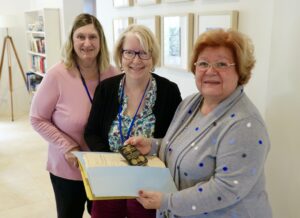
Interviews in the State Library related to the Santin family:
- OH 872/24 – Anna Santin nee Mattiazzo: (2013)
- OH 872/27 – Diana Panazzolo nee Santin: (2013)
- OH 872/47 – Sandra Conci nee Santin: (2018)
- OH 872/62 – Denise Doyban nee Santin (2021)
- OH 872/13 – Oscar Mattiazzo (married to Virginia Santin) – 11 interviews recorded 2011 and 2012.
A market gardener donates records books
Earlier this year, Johnny Marchioro donated three books of records of the operation of Marchioro family market garden that he had kept since the late 1950s. When he left school Johnny worked with his parents who had 21 glasshouses at Lockleys and grew tomatoes, beans and other vegetables. In 1958 at aged 18 years, Johnny began keeping detailed records of what his family sold every time they went to market. The records document the operations of a small migrant family business that grew tomatoes and beans in twenty-one glasshouses and other vegetables at Lockleys.
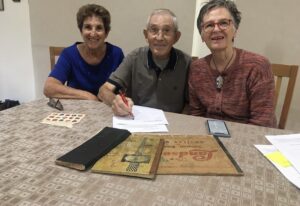
These historical documents reflect the scale of changes in growing vegetables, market prices, operational costs and earnings involved in small intensive family market gardens that do not exist today. Johnny maintained records after he married Eleonora Ottanelli in 1965 and they established their market garden at Bolivar. There, they worked in partnership for more than 40 years. The records books are unique because of the amount of information that Johnny provides: seasonal planting, range of crops, and variation in market prices. Also included are details about Johnny and Eleonora’s costs for establishing the market garden at Bolivar and also their expenses for building their home.
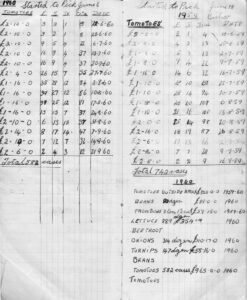
A family collection of oral histories and artefacts in the State Library
The State Library now holds a comprehensive collection of oral history interviews and other artefacts that provide detailed information about two generations of the Marchioro family and their experience of market gardening in Adelaide. Johnny’s parents, Vittorio and Angelina, were interviewed in 1984 for a project about migrants who arrived between the wars. In his interview, Johnny speaks about his long career of working market gardens and the Veneto community. His brother, Romano, reflects on his childhood, the market garden and links to other Veneto families. Eleonora describes her experience of becoming a market gardener in partnership with Johnny. The following interviews are in the State Library:
- Vittorio and Angelina Marchioro OH 12 (1984)
- Johnny Marchioro OH 872/1 (2008)
- Romano Marchioro OH 872/20 (2012)
- Eleonora Marchioro OH 896/7 (2008).
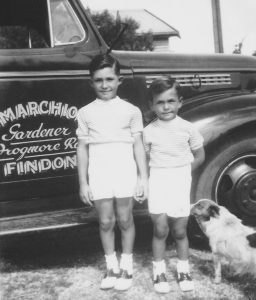
Johnny also donated 18 photos which reflect his family’s life and the community on the market gardens from the 1940s to the 1990s to the State Library to accompany his interview which was the first one I recorded for the Veneto market gardener’s oral history project in 2008.
Preserving family records for the future
Photos and documents can help us to understand the history of a family and the times in which it lived. The State Library accepts donations of materials with historical significance. Records donated by migrants are of particular interest because they offer information that may not be included in written accounts of South Australian history.
The documents and photos that the Santin family and Johnny Marchioro are preserved for the future in the State Library. They will expand understanding of the experience of the Veneto market gardener community. These resources can live with one descendant or they can be donated to the Library and become important records for future research about the social, cultural and economic history of South Australia.
Madeleine Regan
30 July 2023
